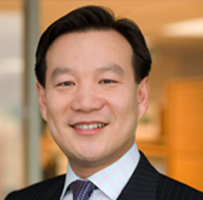Key points
- While the transformative potential of artificial intelligence (AI) has more recently come into focus, these technologies have played a key role in the evolution of our systematic investment approach for nearly two decades.
- Compared to general purpose chatbots, the large language models (LLMs) that we use for security analysis are trained and fine-tuned on more narrow, curated datasets to perform specific investment tasks with a high degree of accuracy.
- In navigating dynamic market themes, our Thematic Robot tool blends human insight with the power of LLMs and big data to build equity baskets with greater efficiency and breadth of exposures.
The rise of LLMs and public availability of generative AI tools has driven a wave of excitement over AI’s potential to transform society, economies, and workflows.
As the reach of AI expands across industries, this insight explores its impact and applications in investment management. Within BlackRock Systematic, AI and machine learning have played a pivotal role in our investment process for nearly two decades. We leverage these capabilities with the goal of continually shifting from the realm of qualitative to quantitative, increasing the breadth of what we’re able to measure in pursuit of more precise and differentiated investment outcomes.
Using AI to uncover investment insights from textual data
LLMs represent a step-change in AI research, underpinned by model advancements and tremendous growth in compute power and the volume of data available for training. Newer model generations utilize transformer technology, a neural network architecture that can process long sequences of elements (like words in a sentence) while accounting for contextual relationships. Modern LLMs are trained on a vast amount of text, equivalent to over 1,000x the size of Wikipedia. During training, these models acquire grammatical knowledge, as well as some factual knowledge and basic common-sense reasoning.
An important skill that proves useful in investment applications is the ability of LLMs to efficiently analyze and extract granular insights from existing textual data. As systematic investors, we synthesize information from a variety of text sources, including analyst reports, corporate earnings call transcripts, news articles, and social media to help inform investment forecasts and uncover potential alpha opportunities.1
Our earliest methods for text analysis focused on counting the number of positive and negative words found within a document to create an aggregate sentiment score. While these signals proved effective, they weren’t designed to account for a wide range of factors that can influence the meaning of text. Today, rather than analyzing each word individually, we utilize LLMs to process a piece of text holistically, accounting for the relationships between words in each sentence and the broader document.
Figure 1 illustrates this using the word “company” as an example, with the model assessing the importance of other words to its meaning. The most relevant words are highlighted in the darkest orange color, including the company’s name (“XYZ”), “strong” and “earnings.” The lighter shades of the color represent less significant connections. The ability to scale this deeper level of analysis across the breadth of textual data available seeks to extract more nuanced, valuable insights in our security analysis.
LLMs underlying general-purpose chatbots are trained on a massive volume of data inputs relating to several topics, which allows them to perform a wide range of tasks with broad applicability. By comparison, the LLMs used in our investment process are fine-tuned to perform specific investment tasks, for example forecasting the market reaction following corporate earnings calls. These models are trained on a more narrow, specific set of data inputs in order to perform that task with a high level of accuracy.
Figure 2 compares the forecasting accuracy of our earnings call model with OpenAI’s recent GPT models, using a random sample of 500 company earnings calls that took place in Q1 2024. Interestingly, our analysis suggests that the forecasting accuracy of OpenAI’s GPT models has decreased with newer versions of GPT-4. A likely explanation is that these models are trained and evaluated on their role as general purpose assistants, with emphasis on improving their ability to generate an output that is perceived as helpful by humans with each new version. There is some evidence that this form of fine-tuning strengthens general purpose capabilities at the expense of other applications, which may be contributing to the degradation in performance on specific predictive tasks. This contrasts with our proprietary model that is trained on more than 400,000 earnings call transcripts covering over 17,000 public firms, combined with two decades of historical market data, to explicitly learn an association between earnings call text and subsequent market reaction.
Using AI to navigate the themes driving markets
LLMs also play a key role in how we navigate the dynamic universe of market-relevant themes. Themes can span a wide range of topics from secular trends to emerging mega forces and tend to drive meaningful returns across securities that may otherwise be unrelated. They often cut across traditional boundaries like industries, styles, or geographies.
When a topic captures market attention—for example the rapid shift to a work-from-home environment or the release of a breakthrough innovation—investors often build bespoke security baskets which can be manual and time consuming or leverage existing broker baskets that can lack transparency and breadth. These challenges led us to design a fast and flexible process for building equity baskets that we call the Thematic Robot. The “robot” allows us to blend the power of LLMs with our proprietary data to build long/short or long only equity baskets with the help of a single streamlined tool.
The below highlights a case study of a portfolio manager using the tool to build a basket around the GLP-1 theme—which is a class of weight loss pharmaceuticals that have quickly risen in popularity. The example shows how the LLM’s deep knowledge base supplemented with text analysis across conference calls helped uncover a wide breadth of positive and negative exposures in just a matter of minutes.
Importantly, portfolio manager expertise is engrained in every part of this process—from defining the specific theme or scenario, customizing the analysis with human determined priors, iterating on the output with full transparency into the LLM’s logic, and refining the insights expressed in portfolios. The tool’s intent is to bring speed and scale to thematic basket construction, providing a comprehensive view of companies directly or indirectly connected to the theme.
We use these thematic insights for a wide range of applications in systematic strategies—including harnessing alpha in equity portfolios, measuring exposure of existing portfolios to emerging themes, and tactically rotating across the wide range of themes driving markets over time.
In the example shared above, the robot helped identify the less obvious leg of a thematic trade with minimal human intervention needed. However, there are also scenarios where portfolio manager input is crucial for correcting a mistake the LLM has made or providing more context to improve the quality of the output. While the advancement of LLMs and the continuous development of the framework seeks to reduce limitations of the technology and associated risks, the involvement of human experts will remain crucial to any application of AI in investment management.
Conclusion
The growing popularity and accessibility of AI has sparked increased interest over its potential impact on the world of investing. Within BlackRock Systematic, we’ve been leveraging AI and machine learning for several years to help deploy investment intuition at scale, for example using LLMs to improve the precision of our text-based investment analysis and our efficiency in building thematic baskets. As markets dynamically evolve, these capabilities seek to transform data into valuable insights in pursuit of better investment outcomes.





